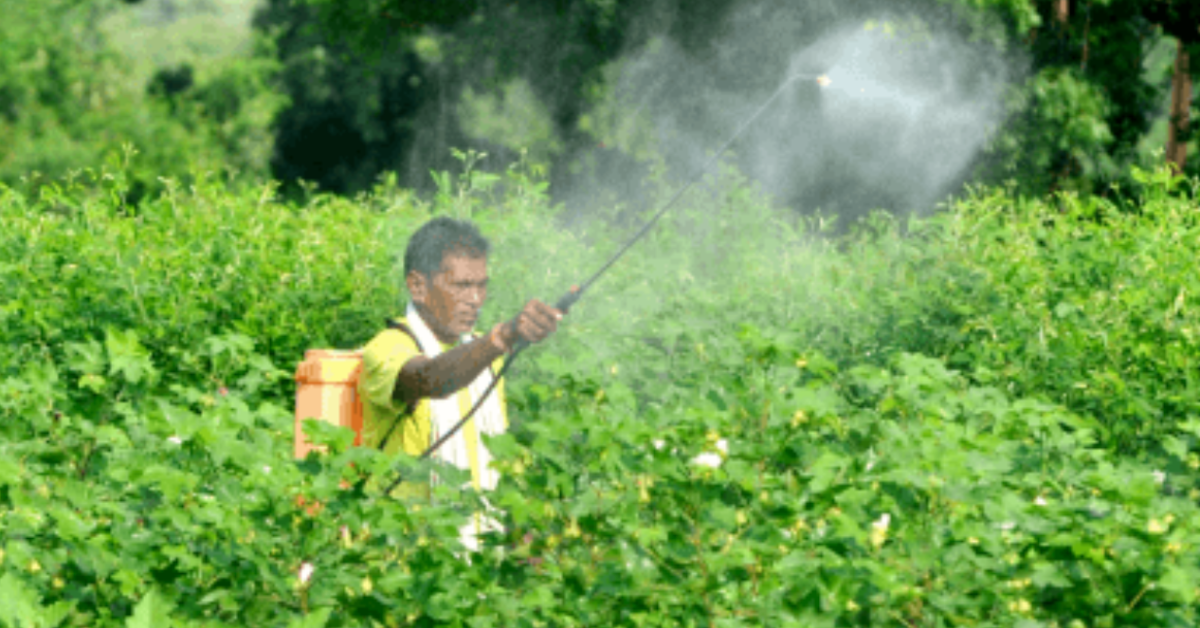Just walk into any hardware store or even supermarket and there is sure to be an entire shelf dedicated to pesticides.
Chemical pesticides are extremely dangerous to all lifeforms including humans.
It’s estimated that worldwide atleast 1.8 million people engage in some form of agriculture, most of these people also use chemical pesticides that are so readily available.
Pesticides are any chemical, manmade substance that are used to prevent, repel and destroy unwanted insect pests and bugs, and even rodents, and microorganisms ext…
However, most, if not all home pest problems can easily be addressed without turning to these ecologically destructive compounds, which wreak havoc and cause severe destruction to both the bad insects and the good, beneficial ones too.
The primary reason is because they seemingly find there way into the soil, the storm drains, which eventually drain into our waterways.
Here, they can lurk for months and even years and many times wind up in sensitive aquatic life and even the fish that many people eat for dinner.
Dangers of Pesticides
Pesticides are known threats to all living species, including humans. However, people that are at even higher risk are children, the elderly and especially mothers that are expecting.
The best alternative is to buy natural, organic and chemical free food and produce, and to NEVER buy these chemicals or patronize these companies.
But, an even better way is to frequent your local farmers market and speak directly with the farmer that is selling you your produce, this way you can learn more about and understand what his particular farming practices are and how he stewards the land.
This is the only way to fully know what kind of chemicals your food is being exposed to.
Even “organic food” is allowed to have a certain number of chemicals applied for growing purposes, now these are safer than their conventional counterparts, but they’re still chemicals.
This is extremely important because pesticides never just remain on plants exterior cell walls. One class of pesticides aka systemic pesticides are one set of chemicals that are easily absorbed into a plant, especially when applied to the soil, the leaves and even the commercially available seeds (treated seeds).
Once applied, the plant naturally circulates the pesticides throughout the tissue walls and kills the intended insects that are feeding on them.
However, it’s VERY important to note that systemic pesticides cannot merely be just washed off with soap and water!
There are four primary systemic pesticides that are broadly used on food crops, which are part of the nitroguanidine/neonicotinoid group of chemicals. These pesticides are a huge player in the worldwide Colony Collapse that are decimating bees at an alarming rate (especially over the last decade).
Many dangerous pesticides like Imidacloprid and Thiamethoxam are 100% legal to apply to produce right up to the day of harvest, and the next day can be displayed on your dinner plate.
Clothianidin and Dinotefuran are also harmful chemicals that are allowed to be applied to seeds and directly on greens, potatoes, and cucumbers that you and I eat.
One of the most notorious chemicals (Glyphosate) is widespread throughout the world, and is actually classified as an “herbicide” and not a pesticide. The reason I list it here is because of it’s fatally destructive properties.
Glyphosate is a systemic herbicide which is a crop desiccant, which is typically applied just before harvest. This chemical is used to kill weeds, grasses and other foilage, however, chemcals aren’t able to choose their victoms and sadly anything that comes into contact with them is negatively affected, and for small creature, many times fatally affected.
But by far, the most alarming part of this chemical is how widespread it’s use it. Everyone one from gardeners to maintenace men, golf courses to stay at home mom’s are applying this to their land (many times without even knowing it’s unhealthy effects) to both the immediate family and their local and regional ecosystems and beyond.
It even ends up flowing through our waterways where it can lurk for many months and even years. Scientists still don’t fully understand it’s lasting effects on both the natural world and the human anatomy.

Based off the picture above, in 2007, glyphosate was the most widely used herbicide throughout the U.S. It was estimated that around 180 million pounds were applied to U.S soils. It’s still used heavily in agriculture, horticulture, viticulture (yes wine), silviculture and everywhere inbetween.
But the truth is, there are many more natural and much safer alternatives, with one being Diatomaceous Earth.
Diatomaceous Earth is the best alternative solution (for pests)
It’s a powder that’s made from fossilized, prehistoric crustaceans, known as diatoms.
Diatomaceous Earth naturally has sharp edges that actually cut into the insect’s bodies which cause immediate harm to them which results in their death.
Most indoor pests and insects are negatively impacted by the presence of DE.
How To Use Diatomaceous Earth
For pests or unwanted insects (like ants and cockroaches inside) for example, It’s simple to use, just sprinkle a little bit on the surface her and there.
The important thing to remember is to put in their pathway and where the little critters will be migrating.
What happens is when bugs and other unwanted pests come into contact with DE, it’s sharp edges cuts them up and dries them out (don’t worry, it’s of no harm to you).
Be sure to always store in an airtight container and apply DE. in it’s dry powdered state, because when it gets wet, it becomes inaffective.
DE. can last indefintely when properly stored.

